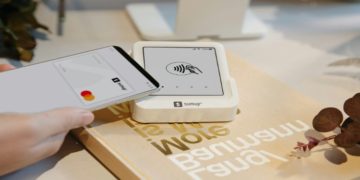Mobile banking in Austria is evolving rapidly, driven by changing user expectations, regulatory updates, and technological advancements. As digital banking becomes the norm, customers demand seamless, intuitive, and secure experiences that cater to their financial needs.
To stay ahead, mobile banks in Austria must embrace user experience (UX) trends that enhance accessibility, security, and engagement. From AI-powered personalization to biometric security and voice-enabled banking, this article explores five key UX trends shaping the future of mobile banking in Austria and how banks can implement them to remain competitive.
UX trend number 1 – Hyper-personalization through AI and data analytics
Customers today expect more than just basic banking services—they want a personalized digital experience that adapts to their financial habits. Mobile banks in Austria are integrating artificial intelligence (AI) and data analytics to create hyper-personalized services that enhance customer engagement.
This is how mobile banks in Austria are personalizing user experience:
- AI-driven financial insights. Mobile banking apps analyze users’ spending patterns and provide real-time budgeting advice to help them manage their money more effectively.
- Customized product recommendations. Banks use AI to suggest credit cards, loans, or investment opportunities tailored to individual financial behaviors.
- Proactive notifications. Users receive personalized alerts about upcoming bill payments, potential overdrafts, or savings opportunities.
Why does personalization matter for mobile banking UX?
Personalized banking experiences increase user engagement and satisfaction by offering meaningful, relevant insights. When customers feel that their bank understands their needs, they are more likely to remain loyal and take advantage of additional banking services.
UX trend number 2 – Biometric authentication for seamless security
Security remains one of the top concerns for mobile banking users. Traditional authentication methods—such as passwords and PINs—are increasingly being replaced or supplemented by biometric authentication, which offers a balance of security and convenience.
These are the main types of biometric security measures gaining traction in mobile banking in Austria:
- Facial recognition allows customers to log in to their banking apps instantly without remembering complex passwords.
- Fingerprint scanning is a fast and secure way to approve transactions and verify identity.
- To detect potential fraud, behavioral biometrics analyze a user’s unique interaction patterns (such as typing speed and touchscreen behavior).
How does security enhance mobile baking UX?
Biometric authentication makes mobile banking more secure and user-friendly. It reduces the frustration of forgotten passwords while providing a frictionless experience for everyday banking transactions.
UX trend number 3 – Voice-enabled banking and conversational interfaces
This technology is transforming digital banking, making transactions and customer support more accessible and convenient for people who rely less and less on typing and staring at screens too much. As voice assistants like Amazon’s Alexa, Google Assistant, and Apple’s Siri become more integrated into daily life, mobile banks in Austria are beginning to incorporate voice banking features into their apps.
Some examples of voice-enabled banking features:
- Customers can check account balances or view recent transactions using simple voice commands.
- Users can transfer funds or pay bills hands-free, making mobile banking more accessible for multitaskers and those with disabilities.
- AI-powered chatbots provide 24/7 customer support, answering common queries without requiring users to type.
According to Ergomania UX Agency, this is one of the most defining trends regarding mobile banking in Austria. Voice-assisted banking is a modern feature that not only improves accessibility but also makes financial management faster and more convenient for more and more people.
What are the UX benefits of voice-enabled banking?
- Hands-free convenience for users on the go.
- Faster interactions compared to manual typing.
- Enhanced accessibility for visually impaired users or those with mobility limitations.
As voice recognition technology improves, we can expect even more advanced voice-driven banking solutions to emerge in the Austrian market!
UX trend number 4 – Seamless multi-device integration
Consumers no longer use just one device for banking. Whether it’s a smartphone, tablet, laptop, or smartwatch, they expect a seamless digital experience across all platforms.
This is how mobile banks in Austria are improving multi-device UX:
- Cross-device transaction continuity. Users can start a banking transaction on their phone and complete it on their laptop without disruptions.
- Real-time synchronization. Any changes made on one device are instantly reflected on others, ensuring accuracy and efficiency.
- Wearable banking apps. Smartwatch apps allow customers to quickly check balances, approve payments, or receive instant fraud alerts.
Why does multi-device integration matter for mobile banking UX?
A consistent and frictionless UX across multiple devices enhances user satisfaction and encourages higher engagement. When mobile banking is effortless across platforms, customers are more likely to interact with their banking app frequently and take full advantage of its features.
UX trend number 5 – Gamification and micro-learning for financial education
Many banking customers struggle with financial literacy, and mobile banks in Austria are addressing this challenge through gamification and micro-learning. By incorporating interactive elements, banks can make financial education more engaging and rewarding for their users – keeping them more loyal to their app at the same time.
Here are some examples of gamification on the Austrian mobile banking scene:
- Savings challenges. Users are encouraged to set savings goals and track their progress through interactive dashboards.
- Reward-based incentives. Customers receive points, cashback, or badges for healthy financial behaviors, such as paying bills on time or increasing their savings.
- Micro-learning modules. Mobile banking apps can include short, interactive lessons on topics like budgeting, investing, and credit management.
How does gamification impact mobile banking UX?
Gamification transforms mobile banking into an engaging and educational experience, motivating users to develop better financial habits while enjoying the process. When customers feel empowered and informed, they are more likely to trust and continue using their banking app.











































































